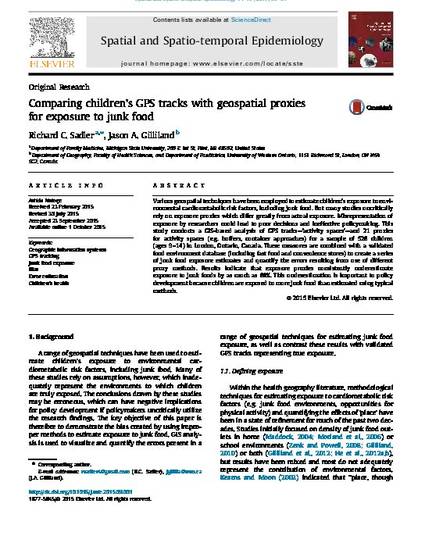
Various geospatial techniques have been employed to estimate children’s exposure to environmental cardiometabolic risk factors, including junk food. But many studies uncritically rely on exposure proxies which differ greatly from actual exposure. Misrepresentation of exposure by researchers could lead to poor decisions and ineffective policymaking. This study conducts a GIS-based analysis of GPS tracks—‘activity spaces’—and 21 proxies for activity spaces (e.g. buffers, container approaches) for a sample of 526 children (ages 9–14) in London, Ontario, Canada. These measures are combined with a validated food environment database (including fast food and convenience stores) to create a series of junk food exposure estimates and quantify the errors resulting from use of different proxy methods. Results indicate that exposure proxies consistently underestimate exposure to junk foods by as much as 68%. This underestimation is important to policy development because children are exposed to more junk food than estimated using typical methods.
Available at: http://works.bepress.com/jason-gilliland/48/

Also available open access in Spatial and Spatio-temporal Epidemiology at: https://doi.org/10.1016/j.sste.2015.09.001